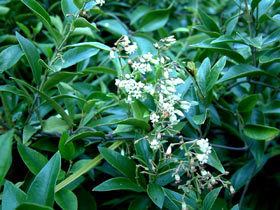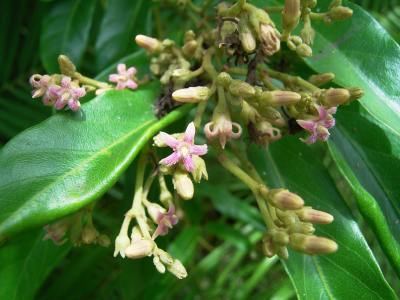Rank Genus | ||
 | ||
Similar Parsonsia straminea, Anodendron, Parsonsia heterophylla, Ichnocarpus, Aganosma | ||
Nonpatented ornithorhynchidae parsonsia
Parsonsia is a genus of woody vines of the dogbane family, Apocynaceae. Species occur throughout Indomalaya, Australasia and Melanesia.
Contents
- Nonpatented ornithorhynchidae parsonsia
- Medicinal rice p5m formulations for parsonsia excess pankaj oudhia s medicinal plant database
- Description
- Taxonomy
- Species
- Cultivation
- References

Medicinal rice p5m formulations for parsonsia excess pankaj oudhia s medicinal plant database
Description

The leaves are opposite, the shape and size of juvenile leaves often bearing little resemblance to the adult leaves. The latex may be clear and colourless, pale yellow or milky white. The flowers are green, white, cream, yellow, orange, red, pink or brown, sometimes with contrasting markings. These are followed by elongated pod-like capsules, the two follicles eventually separating to reveal numerous seeds with long, silky hairs.
Taxonomy

The genus was named and formerly described in 1810 by botanist Robert Brown in his paper On the Asclepiadeae published in Memoirs of the Wernerian Natural History Society . He named the genus in honour of James Parsons (1705–1770), an English physician and Fellow of the Royal Society.

The generic name Parsonsia R.Br. (1810) is conserved against the earlier homonym Parsonsia P.Browne which was given to a genus in the family Lythraceae. The latter genus is now included in Cuphea.
Parsonsia is closely related to Artia and Prestonia.
Species
Accepted species

- Parsonsia balansae Baill. = Artia balansae (Baill.) Pichon ex Guillaumin
- Parsonsia barbata Blume = Parameria laevigata (Juss.) Moldenke
- Parsonsia brachycarpa Baill. = Artia brachycarpa (Baill.) Boiteau
- Parsonsia bracteata Hook. & Arn. = Mandevilla pentlandiana (DC.) Woodson
- Parsonsia corymbosa (Jacq.) R.Br. ex Steud. = Pinochia corymbosa (Jacq.) M.E.Endress & B.F.Hansen
- Parsonsia diversifolia (Warb.) Markgr. = Lyonsia diversifolia Warb.
- Parsonsia floribunda (Sw.) R.Br. ex Steud. = Pinochia floribunda (Sw.) M.E.Endress & B.F.Hansen
- Parsonsia francii Guillaumin = Artia francii (Guillaumin) Pichon
- Parsonsia galeottiana Baill. = Thenardia galeottiana Baill.
- Parsonsia javanica Blume 1826 not (Blume) K. Schum 1895 = Urceola javanica (Blume) Boerl.
- Parsonsia leptocarpa Hook. & Arn. = Forsteronia leptocarpa (Hook. & Arn.) A.DC.
- Parsonsia lifuana Baill. = Artia lifuana (Baill.) Pichon ex Guillaumin
- Parsonsia myrtifolia (Poir.) Roem. & Schult. = Landolphia myrtifolia (Poir.) Markgr.
- Parsonsia ovata Wall. ex G.Don = Pottsia laxiflora (Blume) Kuntze
- Parsonsia spicata (Jacq.) R.Br. ex Steud. = Forsteronia spicata (Jacq.) G.Mey.
Cultivation

A species from New Zealand, Parsonsia variablis (Variable-leaved Parsonsia), was introduced into cultivation in England in 1847 as a greenhouse plant and was noted to have a sweet scent, however the flowers were regarded as "not very showy". This species is thought to be a form of Parsonsia heterophylla.
